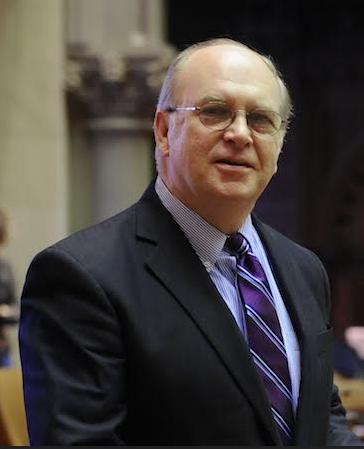In Public Service: Brennan’s tenure stretches back to mid-1980s

James Brennan was first elected to the New York state Assembly in 1984. There are only a small handful of lawmakers who have been in the Assembly longer. Photo courtesy of Assemblymember Brennan’s Office
James Brennan was first elected to the New York state Assembly in 1984 and has seen a lot of changes in Albany in those 31 years. Brennan, a Democrat who represents the 44th Assembly District (AD), has seen four Assembly Speakers come and go and is currently working with his fifth, Carl Heastie.
But Brennan seems to prefer looking ahead, not looking back. He always looks like he’s ready to grapple with the next challenge.
